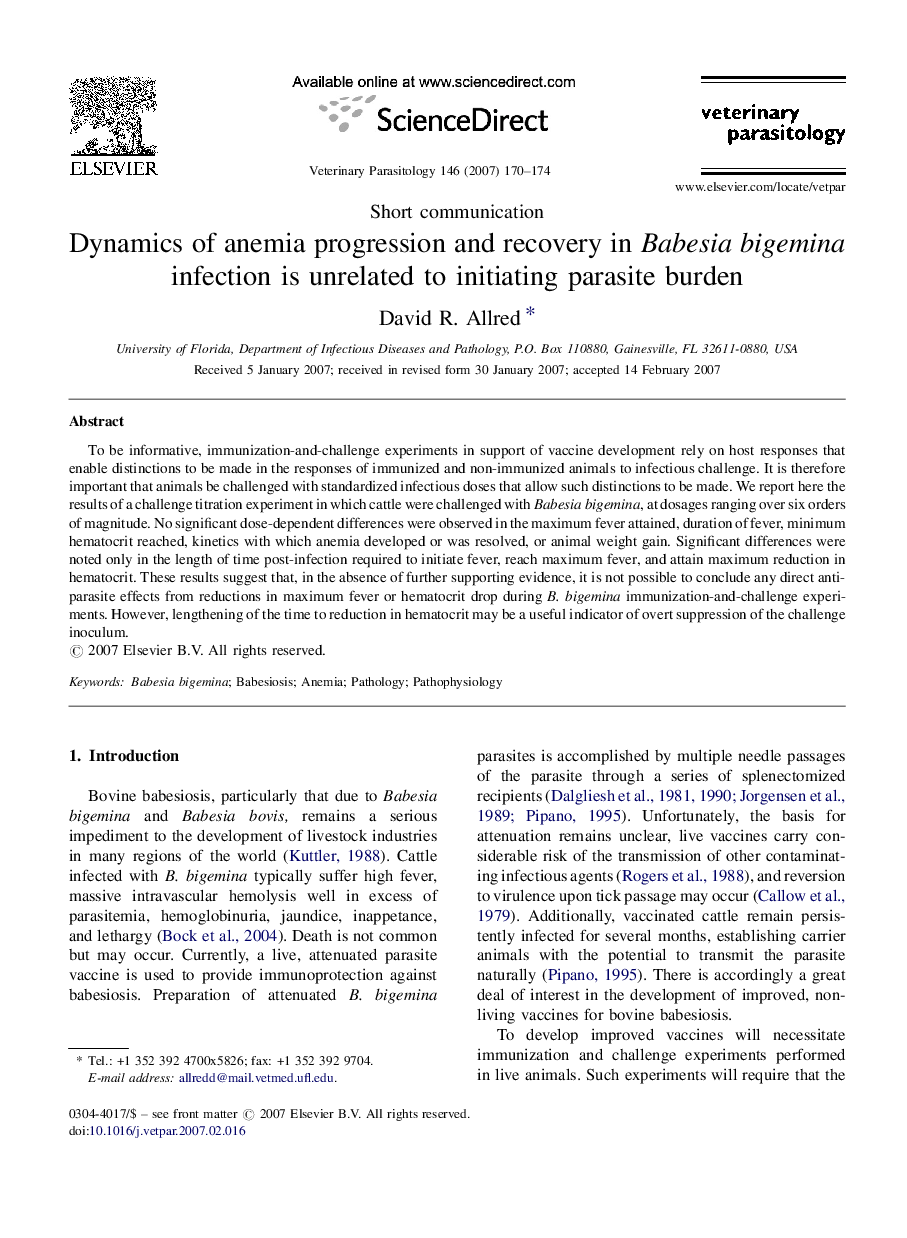| Article ID | Journal | Published Year | Pages | File Type |
|---|---|---|---|---|
| 2471971 | Veterinary Parasitology | 2007 | 5 Pages |
To be informative, immunization-and-challenge experiments in support of vaccine development rely on host responses that enable distinctions to be made in the responses of immunized and non-immunized animals to infectious challenge. It is therefore important that animals be challenged with standardized infectious doses that allow such distinctions to be made. We report here the results of a challenge titration experiment in which cattle were challenged with Babesia bigemina, at dosages ranging over six orders of magnitude. No significant dose-dependent differences were observed in the maximum fever attained, duration of fever, minimum hematocrit reached, kinetics with which anemia developed or was resolved, or animal weight gain. Significant differences were noted only in the length of time post-infection required to initiate fever, reach maximum fever, and attain maximum reduction in hematocrit. These results suggest that, in the absence of further supporting evidence, it is not possible to conclude any direct anti-parasite effects from reductions in maximum fever or hematocrit drop during B. bigemina immunization-and-challenge experiments. However, lengthening of the time to reduction in hematocrit may be a useful indicator of overt suppression of the challenge inoculum.
